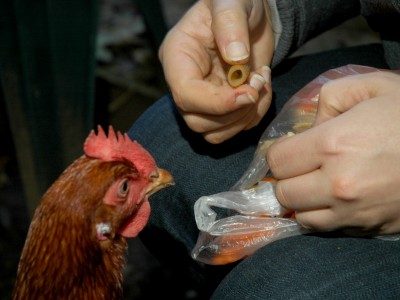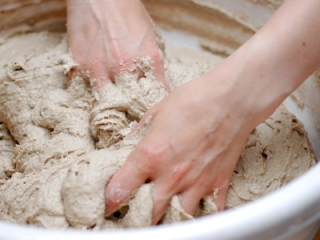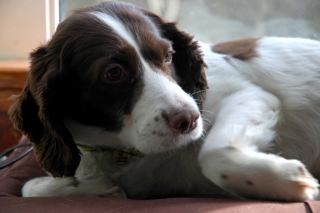Yesterday’s consumables and their packaging
Last week, I saw this post over at Not Dabbling In Normal as part of Real Clean month over there – Xan had listed every cleaning product she’d used before 7am – noting any packaging involved and the presence of synthetic chemicals where applicable. She does a lot of cleaning before 7am!
I thought it was a really interesting exercise because it’s so easy to become blind to the things we do/use on a daily basis – and you can’t take steps to cut back from an environmental/chemical-reduction or frugal point of view until you know what you’re using. I couldn’t repeat the exercise exactly (because I’m not generally awake by 7am let alone having done any cleaning!) so I decided to track all the consumables I personally use/waste I produce during the day, so see where I can make changes.
Yesterday was a slightly unusual day – I went to the theatre in the evening (so I didn’t have a proper meal and wore a little make-up — very unusual for me!) and I didn’t actually do any cleaning/laundry except for washing some cutlery at lunchtime. I’m going to repeat this exercise offline on random different days over the next fortnight to hopefully get fuller picture – then I’ll use that information to cut down. I can already see some areas where I could easily reduce our contact with synthetic chemicals and packaging (eg, make liquid hand soap, use a washable dish cloth, make more of our own cakes/sweet treats, and reassess my face “cleansing” routine).
All the consumables/waste I produced yesterday
In order of use – grouped together where applicable to make it easier to read and I’ve only listed things the first time they were used.
Things in bold and italics were single-use items, immediately heading to landfill. Things in italics were multiple-use/bulk-bought items that would eventually even up in landfill when the pack/bottle was finished.
Everything is shop-bought unless specified otherwise.
Read MoreZero waste pets: the chickens
Back in July, I wrote about our efforts to make our pets zero waste, starting with the dog. Switching between food types recently has made me think about the chickens and waste.
Food
We buy layers pellets in 20kg or 25kg bags. These are usually plastic sacks, which can, for now be reused around the garden for weed barriers, storage etc. I suspect we’ll reach saturation point on that though, so we’ll have to find some other way to reuse or recycle the bags. (Some food, for example, the Golden Yolk stuff I mentioned in the consumption post, comes in thick paper sacks. That is obviously better from a zero waste point of view, although I’d worry about it in the damper months.)
Treats
At the moment, now the garden is mostly sleeping, their main treats are corn (20kg plastic sacks, which last for ages and ages) and kitchen scraps.
The latter is interesting from a zero waste point of view – they’re actually helping reduce our waste by eating scraps and leftovers. Admittedly most of the stuff they’re getting would normally go into the compost so it’s not reducing landfill, but it’s making better use of it.
Read MoreBaking things that’ll last
I love baking bread, cakes and biscuits – the process is fun, the product is tasty and it’s very often cheaper than buying them ready-made from a supermarket. But I don’t have the time to bake every day at the moment – and that often results in having to buy expensive, pale imitations of nomminess, and sometimes food waste too.
Our slow rise bread is great – it’s edible as long as there is any to be eaten. Because it’s not quite so fluffy as supermarket bread, it doesn’t feel as instantly stale and it’s fine as fresh bread for three days or so, then good for toast for a couple more days. Other baked goods though – scones, cakes, biscuits – tend to be lovely on the first two days but then quickly stale – either going soggy or hard depending on which is undesirable in the item.
So what do you do to make sure your baked good will last until you can bake again?
Airtight containers (typically old ice cream tubs) don’t seem to help that much – perhaps with biscuits (cookies) I need something else in there to absorb the moisture… rice perhaps?
Freezing breads & cakes is a possibility – anyone got any preference to freezing them before or after baking (or part-baked)? I keep meaning to freeze homemade pizza dough – it can be frozen at any stage from after kneading or rising, through to full prepared pizza – does anyone have any preferences for freezing at any particular stage?
As for biscuits, I like the idea of making a roll of dough, which is then frozen and sliced & baked on demand (like for these Earl Grey tea thins) – but with all this breads, cakes and pizza dough, I suspect our freezer will quickly fill up! So what are your favourite longer-life biscuit tricks?
Any thoughts, recipes, suggestions etc would be gratefully received!
(Photo by hisks)
Read MoreMaking our pets zero waste: the dog
A couple of weeks ago, I wrote about drying ox heart and other offal to make dog treats for our springer spaniel, Lily.
We adopted Lily from the Dogs Trust in March and she very quickly made herself a core member of the household – and here, that means being green and frugal :)
Food
As first time dog owners, we accepted the Dogs Trust’s recommendation of a certain type of dry food, with water – or whey or gravy, when they were available. Following feeding advice online, I tried feeding her veggies too – mixing them in with her food or giving them to her like a treat – she politely took them, because she’s a very polite well-mannered dog, but then gently dropped them to the floor and gave me a look. If you have animals/children/beloveds who you regularly try to deceive and betray by handing them a carrot when they expect beef, you know that look.
So, anyway, her food is very low waste: the dry food comes in giant paper sacks = recyclable. And because it’s biscuits, they don’t go off like meat does, so there is no food waste.
Read More





